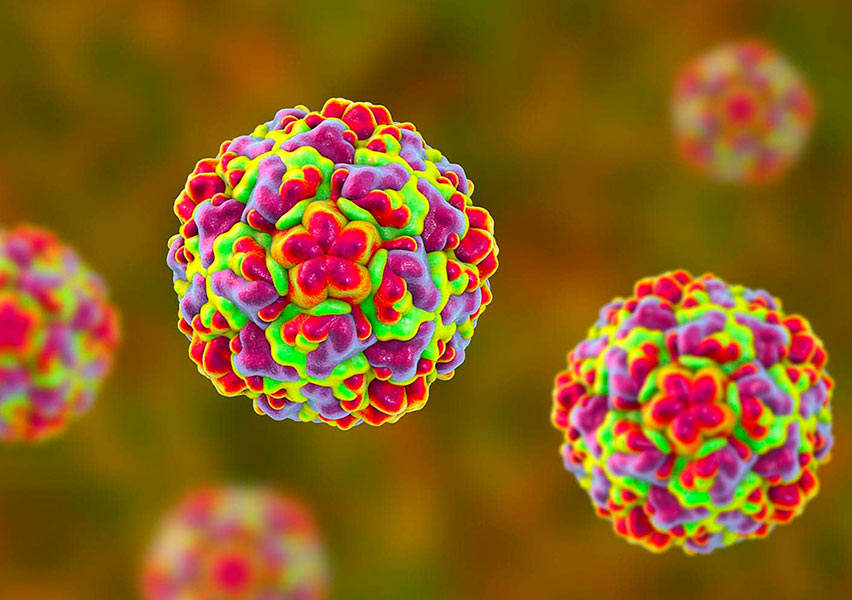Rhinovirus
Rhinovirus is a genus of positive-sense single-stranded RNA viruses belonging to the Picornaviridae family. They are the most common cause of the common cold in humans, a viral infection of the upper respiratory tract. Over 160 serotypes have been identified and are classified into three main species: Rhinovirus A, B, and C. This high level of serotypic diversity makes it difficult to develop an effective vaccine.
Clinical characteristics:
Rhinovirus infections primarily affect the nasopharynx, with an incubation period of 1 to 3 days. Typical symptoms include nasal congestion, runny nose, sneezing, sore throat, dry cough, headache, and general malaise. Fever is uncommon in adults but may occur in children. In most cases, symptoms are mild and self-limited, resolving within 5 to 7 days, though they can last longer in individuals with chronic respiratory diseases.
In patients with asthma or COPD, rhinovirus infection can trigger exacerbations and worsen respiratory symptoms. These infections are a leading cause of school and work absenteeism.
Transmission:
Rhinoviruses are transmitted mainly through respiratory droplets produced when coughing or sneezing, as well as direct contact with contaminated nasal secretions. Indirect transmission via contaminated surfaces is also possible, especially when the virus is transferred to the eyes, nose, or mouth by hand.
Diagnosis:
Diagnosis is primarily clinical. In complicated cases or outbreak settings, molecular techniques such as polymerase chain reaction (PCR) can be used to detect viral RNA in nasopharyngeal specimens.
Treatment:
There is no specific antiviral therapy for rhinovirus. Management is symptomatic, including rest, adequate fluid intake, analgesics, and antipyretics. Antibiotics are not effective against viral infections and should only be used in cases of bacterial co-infection.
Prevention:
No vaccine is currently available. Preventive measures include frequent hand washing, avoiding close contact with infected individuals, and covering the mouth and nose when coughing or sneezing. Standard precautions are recommended in healthcare settings to reduce the risk of nosocomial transmission.

